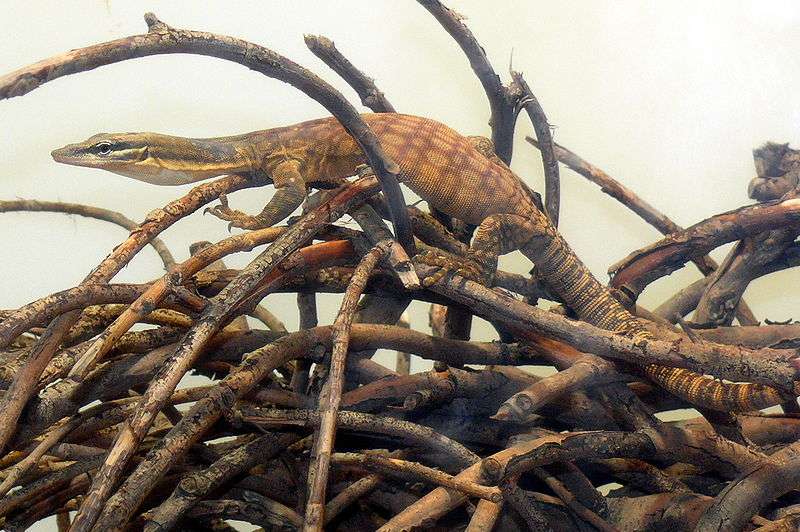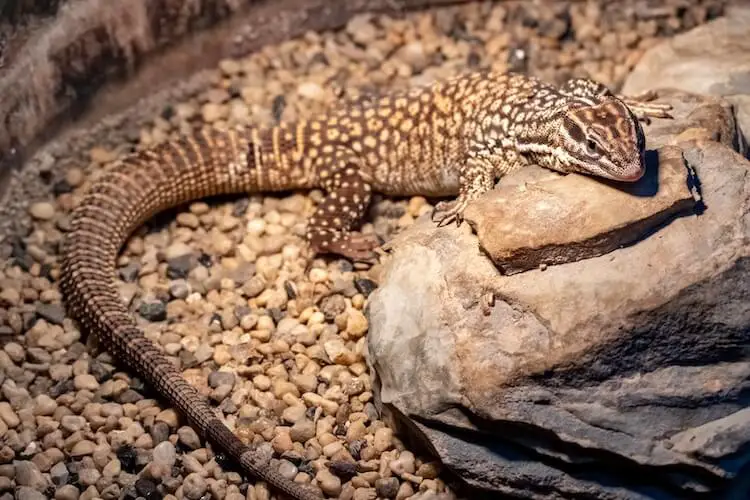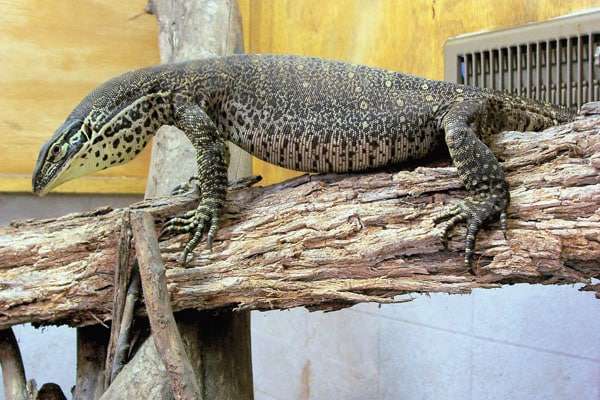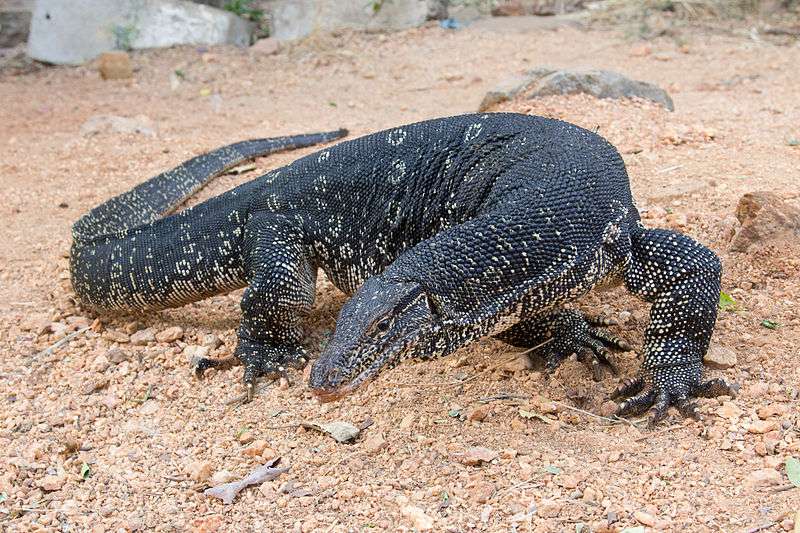
Description
Scientific Name: Varanus glauerti
Life span: Up to 20 years (captivity)
The Kimberly Rock Monitor may grow to be nearly 3 feet long, with the majority of that length made up of its tail. They often have a base color that is light brown or grayish, with crossbands running down their back that are deeper brown or red. Sometimes the patterning on their backs resembles geometric shapes rather than a simple crossband. Their eyes are placed on the side of their head, and they have long necks and thin snouts. Their throat is either white or yellow. They normally have a black line extending from the side of their nose to the rear of their head.
Native Region/Habitat
The Kimberley Rock Monitor inhabits northern Australia. They are mostly found in Western Australia’s Kimberley area. This Monitor is also present in several regions of the Northern Territory, including the Kakadu National Park. These lizards enjoy living in rocky habitats, such as those found near cliffs and other rugged terrain, as their name would imply. They thrive in humid conditions and are occasionally seen along the outskirts of forests.

Behavior
Kimberly rock monitor is an opportunistic predator that is constantly foraging. It is frequently seen hunting among tree branches and hollows, where they might obtain their favored food. The primary food source for the Kimberley Rock Monitor in the wild is insects. They consume a wide range of insects, such as caterpillars, katydids, cockroaches, and spiders. Additionally, they have been seen to consume other kinds of tiny lizards, such as little skinks and geckos that they come upon among the rocks.
Kimberly rock monitors can be handled after it has acclimatized to the settings and the owner. It should not be kept outside its enclosure for a long time as it will get cold.
Care As a pet/In captivity
The wooden vivarium is recommended for keeping Kimberly monitored. 25C- 35C is the ideal temperature for their enclosure. The basking area should have a temperature of around 50C. Provide a fresh water bowl every day. Having a substrate that is at least 30 cm thick will greatly aid in maintaining high humidity levels.
Table





